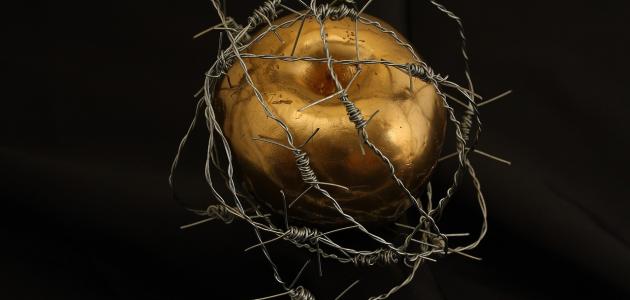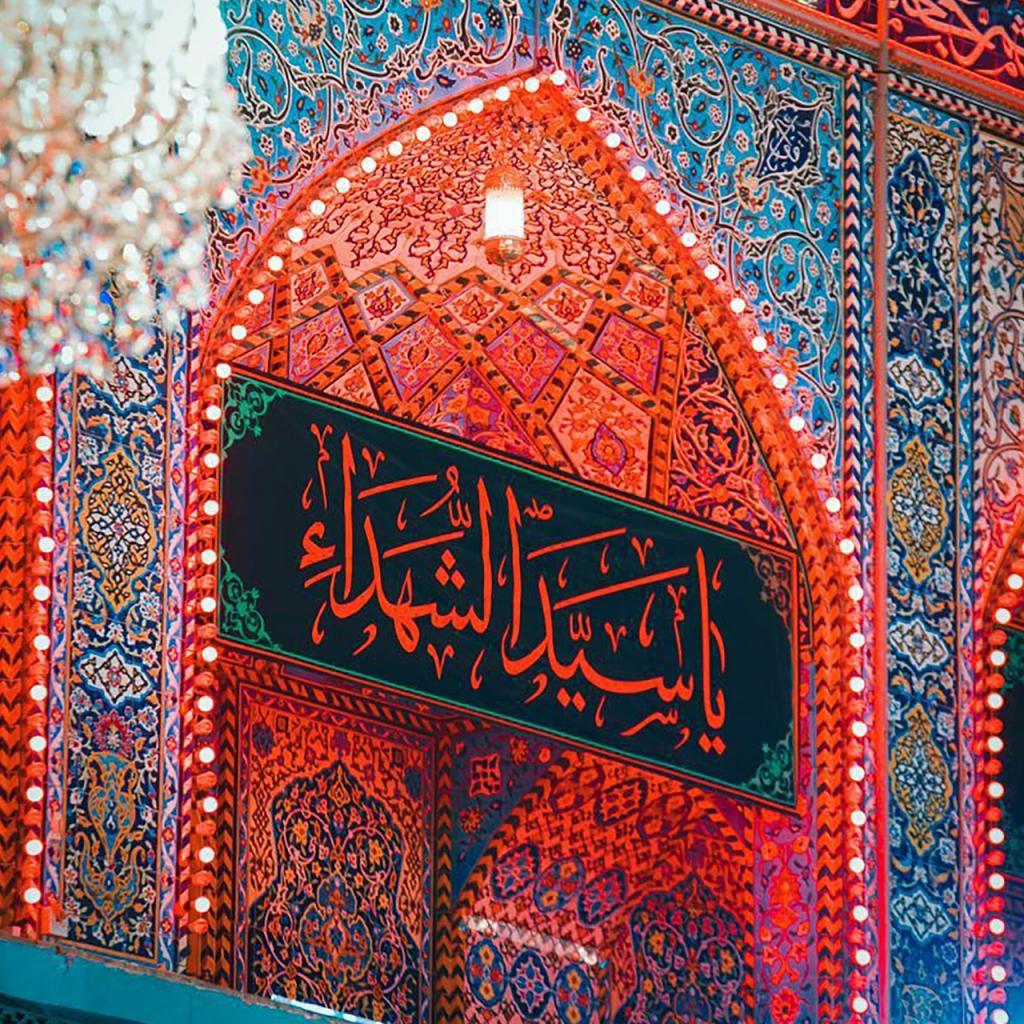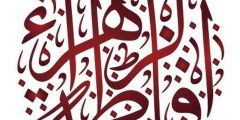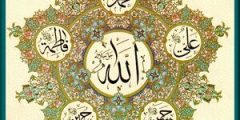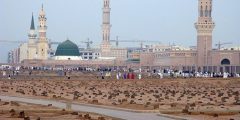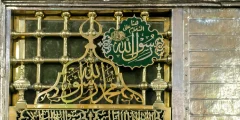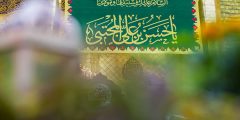Banu HashimThey are one of the stomachs of Quraysh, and they end up... Hashem (Amr) bin Abd Manaf bin Qusayy bin Kullab. And it descends The most honorable Prophet (PBUH) from this belly in particular, and the Hashemites are considered one of the largest and most powerful Arab tribes, and Banu Hashim had a prominent role - especially when Abu Talib (PBUH) confronted their leadership - in supporting the Prophet (PBUH) and defending the message, and thus they had an active role in supporting the Imams. From the People of the House (peace be upon him) and stand by them.
The lineage of the Banu Abbas, who ruled the Islamic world for several centuries, goes back to this clan of Quraysh, and the government was not limited to the Banu Abbas, but rather a number of men from the Hashemite House were able, throughout history, to challenge the rule and form Islamic governments here and there. Banu Hashim enjoys a special status and a prominent position in the Islamic community due to the connection of the Noble Prophet (PBUH) with them.
Lineage of Banu Hashim
Qusay bin Kilab’s lineage goes back to the Prophet Ismail (peace be upon him). Qusayy was born almost a century before the mission, and due to his lofty personality, he confronted the supremacy of the Quraish and assumed important positions for the House of God (the Holy Kaaba). When Qusay bin Kilab died, his sons took on these great tasks, and as soon as he His two sons, Abd Manaf and Abd al-Dar, died, until a dispute occurred over the positions of the Kaaba between them Hashem And his brothers (Bani Abd Manaf) on the one hand and between their cousins (Bani Abd al-Dar), which led to the formation of two alliances, the first of which was known as the Mutayyibin Pact and the other as the Pact of Blood, and the rivalry intensified between the two alliances, and in the end they called for a reconciliation on the condition that they give Bani Abd Manaf bin Qusayy Al-Saqaya and Al-Rafada, and the Hijabah, Al-Liwaa, and Dar Al-Nadwa will be assigned to Banu Abd Al-Dar.
Read also:The story of our master LotHashem
Hashim bin Abdul Manaf bin Qusayy used to bring in a lot of money every year. He used to order menstrual blood from the blood to be placed in the place of Zamzam, then he would be given water in it from the wells in Mecca, and the pilgrim would drink from it, and he would feed them in Mecca, Mina, and Arafat. He was the first to enact the two trade trips of Quraysh: the winter trip to the Levant and the summer trip to Yemen. This was because the Quraysh trade did not go beyond Mecca, so they were in distress, until Hashim rode to the Levant, and came down to Caesar and concluded a trade agreement with him according to contemporary terminology.
Hashim bin Abd Manaf had four males and five females. The males were: Shaybah al-Hamd, who was Abd al-Muttalib; Abu Saifi bin Hashim. His name is Amr, and he is the eldest of them, and Asad bin Hashim. And Nadlah bin Hashim.
Abd Almotalib
One of the important incidents in the life of Abdul Muttalib, which demonstrated the great stature of the man, was that when Abraha, the king of Abyssinia, the owner of the elephant, came to demolish the Kaaba, the Quraysh fled to the tops of the mountains, so Abdul Muttalib said: By God, I will not leave the sanctuary of God and seek glory elsewhere. He sat in the courtyard of the house and then said:
Read also:The owners of the clothing- If you behave chastely, they are your dependents... unless something seems to you
The Quraysh used to say: Abdul Muttalib Ibrahim II The end of Abraha was as told to us in the Holy Qur’an. Some researchers and scholars said that Hashim was only followed by Abdul Muttalib. But it was mentioned in some sources that he was divorced from both of his sons, Nadlah and Amr.
The relationship between Bani Hashem and the rest of the tribes
Conflict and strife arose among the clans of the Quraysh themselves, as the Quraysh had a special status and a high position among the Arab tribes, as each clan sought to be unique in that status and confront the leadership of the tribe.
The roots of the conflict between the Umayyads and the Banu Hashim go back to this factor and the tribal conflict, although some attribute it to historical incidents that cannot be relied upon. Some attributed this conflict to the factor of envy between Umayyah ibn Abd Shams, whose heart had been consumed by envy, and his nephew Hashim. Some of them attributed it to the issue of “discord” - boasting about lineage and lineage - between Harb Ibn Umayyah and Abdul Muttalib. In fact, there are some historical accounts that go back further than that, as they said: Hashim and Abd Shams were twin boys, and one of them was born before the other, and the forehead of one of them became attached to the forehead of the other, so it was removed from it, and blood flowed from that, and she flew away from that. It was said: There will be blood between them.
Read also:Imam Ali bin Abi Talib, peace be upon himAfter the head of the Hashemite family, Abdul Muttalib, died and Banu Hashim was exposed to a severe financial crisis, their star declined until it returned again after a mission. The most honorable Prophet (PBUH) With his honorable mission, the conflict returned again between the Banu Hashim and both the Banu Makhzum and the Umayyads, as they believed that the mission of a prophet from the Banu Hashim was nothing more than one of the episodes of tribal conflict, and that - according to their claim - it was a game invented by the Banu Hashim to confront and take over leadership once again. Other. Hence, they did everything in their power to deny the call and confront it in order to close the door on Bani Hashem.
Historical sources have indicated examples of competition and conflict between Banu Abd al-Dar and Banu Makhzum on the one hand and Banu Hashim on the other hand. After the first conflict that occurred between the two parties, Banu Abd al-Dar entered into an alliance called the Alliance of Alliances, in which they entered into an alliance with Banu Abd al-Dar, Banu Makhzum and Sahm. Jumah and Banu Adi bin Ka'b. The Banu Makhzum, led by their leader Abu Jahl, confronted the Islamic call, thinking that the conflict revolved around the presidency of Mecca, as the mission of a prophet from the Banu Hashim was considered a threat that would undermine their position and authority.
In return, the Banu Abd Manaf concluded an alliance called the Mutaybin, which included the Banu Abd Manaf bin Qusayy, the Banu Asad bin Abd al-Uzza bin Qusayy, the Banu Zahra bin Kilab, the Banu Taym bin Murrah, and the Banu al-Harith bin Fahr. Then the Al-Fudul Alliance was formed under the leadership of Al-Zubayr bin Abdul Muttalib to protect the oppressed, and Banu Hashim was one of its main leaders.
The Banu al-Muttalib sided with the Banu Hashim after a mission The most honorable Prophet (PBUH) They shared with them all the tribulations and problems they faced, such as the siege in the people of Abu Talib, which reveals the depth of the relationship between the two families.
Among those allied with Banu Hashim were Banu Khuza’ah, as mentioned by al-Tabari and others.
After the emergence of Islam
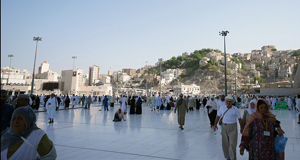
Historical sources tell us that his first work was done by him The most honorable Prophet (PBUH) After God commanded him to convey his call, he gathered Bani Abdul Muttalib (who are the leaders of Bani Hashim and those close to him (PBUH)) in a meeting that was later known as the Day of Warning, in which he called on them to embrace Islam and believe in the message of heaven. Their reaction to the call varied between those who declared their faith immediately and those who believed but did not declare it.
Some of them resisted Prophet (PBUH) He displayed hostility and did not spare any effort in quarreling and hostility, like his uncle Abu Lahab and Abu Sufyan bin Al-Harith bin Abdul Muttalib, who used to satirize the Prophet (PBUH).
Some of them remained as they were and did not convert to Islam until after the conquest of Mecca. However, everyone - despite this - stood in support of the Messenger and confronted the Quraishi hostility, and the position of Abu Talib (peace be upon him) - the dean of the Hashemite House - had a prominent role in urging them to support the Prophet (peace be upon him) and stand by him. Even when the Quraish leaders decided to besiege him Bani Hashem In Al-Shaab, Banu Hashim - by order of Abu Talib (peace be upon him) - all their believers and non-believers, except Abu Lahab and Abu Sufyan bin Al-Harith, gathered in Al-Shaab and endured three years of economic and social siege.
After Abu Talib died, it became a presidency Bani Hashem To Abu Lahab, the Hashemite support diminished To the Messenger (PBUH) until upon his return from Taif, (PBUH) was forced to enter under the protection of Mutim bin Adi, one of the sons of Nawfal bin Abd Manaf, in Mecca.
When the Prophet (PBUH) migrated to Medina, some of Banu Hashim, such as Al-Hamza, migrated with him and on (PBUH) While most of Banu Hashim preferred to remain in Mecca, and this did not prevent them from confronting most of the conspiracies that were being hatched against the Prophet (PBUH). Only some of them participated in that, as they forced him to go out in the Battle of Badr, and he became a prisoner at the hands of the Muslims. When the war ended, a ransom of the prisoners was sent, some of whom remained in Medina for a period of time and then returned to Mecca.
Historical documents have recorded the faith of some of Bani Hashim in different periods. Some of them believed before Al-Hudaybiyyah, such as Aqeel bin Abi Talib, and some of them believed after the conquest of Mecca, such as Abu Sufyan bin Al-Harith. As for Al-Abbas bin Abdul Muttalib, the word of historians differed regarding him, as some went to say that he converted to Islam before the Battle of Badr, and some of them specified it. Before the conquest of Mecca. There is one of Banu Hashim who died in disbelief, and he is Abu Lahab.
The era of the Imams (peace be upon him)
After leaving the Prophet (PBUH) The tribal conflict returned to its original state, until some of the Companions themselves included a confrontation Maybe (peace be upon him) believing that his caliphate meant the leadership of Banu Hashim and their leadership of the Islamic community. Omar ibn al-Khattab expressed this issue in the dialogue that took place between him and Ali (peace be upon him) at times and between him and Ibn Abbas at other times, where he addressed Ibn Abbas, saying: O Ibn Abbas, what prevents Are your people among you? Ibn Abbas said: I do not know. He said: But I know, they hate for prophethood and caliphate to come together among you. On the other hand, we see the Commander of the Faithful, Ali (peace be upon him), declaring that: The Imams from the Quraish were planted in this womb from Hashim, and they are not suitable for anyone other than them, nor are they suitable for rulers other than them.
This is the factor that led many of the Quraysh to disagree Bani Hashem Fearing that the presidency would leave them and remain in this womb in particular. It is the same factor that led to the meeting of some of the Companions in the Saqifa and the contract of succession for the first caliph without consulting Bani Hashim, with all the prophetic confirmations and commandments that Ali (peace be upon him) would be the caliph after him (peace be upon him).
Despite all of this, the Banu Hashim remained preserving their social status, and this is evidenced by the fact that the Diwan prepared by Omar bin Al-Khattab was based on the priority of the Banu Hashim, then those who were next to them in kinship and precedence.
After Othman confronted the caliphate, the conflict returned between the Umayyads and Hashim, as the Umayyads were able to seize the levers of power and saw in this an opportunity to revive the previous strife. Abu Sufyan even expressed what was brewing in his soul, saying: Catch it, O Umayyads. You will catch the ball. For what Abu Sufyan swears by Sufyan: There is neither heaven nor hell. In return it was Imam Ali (peace be upon him) He sets objective criteria for preferring the Banu Hashim over the Umayyads, by saying: The migrant is not like the free, nor is the honest like the close, nor is the righteous like the invalid, nor is the believer like the deceitful.
It is worth noting here that Bani Hashem On the top Commander of the Faithful (P) During the period of the three caliphs, they played a prominent role in managing the state and resolving the dilemmas that faced the authority, until Al-Harith bin Nawfal bin Al-Harith bin Abdul Muttalib was chosen as governor of the city during the time of the three caliphs. With the return of the Caliphate to Commander of the Faithful (peace be upon him) Between 35 and 40 AH, Banu Hashim stood alongside the Imam (peace be upon him), participating with him in all the events he went through, to the point that when he (peace be upon him) moved the center of government from Medina to Kufa, a group of them moved with him, and some of them took on the mandate of some Islamic countries. . They also stood by Imam Hassan (peace be upon him) during his short caliphate, except that Ubayd Allah ibn al-Abbas ibn Abdul Muttalib joined Muawiyah after he had been commander of Imam Hassan’s army. Because of this betrayal, the Imam was forced to make peace with Muawiyah.
After Muawiyah took charge, the issue of tribal conflict became so prevalent that Muawiyah saw the army of Kufa as an army of Banu Hashim in particular. The situation remained as it was regarding those who assumed power after Muawiyah, as they tried to empty the issue of its ideological dimension and dress it in the garb of tribal conflict and immediate interest disputes, as an example. This is what Yazid bin Muawiyah revealed after the Ashura incident when he said:
The
| I wish my elders had witnessed Badr | Al-Khazraj was alarmed by the impact of the rain | |
| Hashem played with King Falah | News came, but no revelation came down |
When Imam Hussein (peace be upon him) refrained from pledging allegiance to Yazid in Medina, Banu Hashim stood beside him, and on the day of Ashura there were men from the Aqeel family and the Ali family at his knees.
Among the honorable positions taken by the Banu Hashim, despite the cruelty of the Umayyad house and its intense hostility towards them, is that they refused to side with Abdullah bin al-Zubayr when he seized control of the city in the year 63 AH. Ibn al-Zubayr even expelled both Muhammad bin al-Hanafiyyah and Abdullah bin Abbas from the city, and it was said that he put them in prison. . When the government of Ibn al-Zubayr fell and the matter returned to the Umayyads, they returned to their previous hostility, to the point that Hisham bin Abd al-Malik ordered the tongue and hand of al-Kumait bin Zaid al-Asadi to be cut off, for no other reason than that he mourned Zaid bin Ali bin al-Hussein.
Despite all this restrictions practiced by the Umayyads against the Hashemites, the influence of the Banu Hashem and their position in the social milieu remained unchanged, to the point that he counted among the reasons for the fall of Abdullah bin Al-Zubayr his uncompromising stance towards the Banu Hashem. Even when Ibn Hubayra came, Ziyad bin Salih al-Harithi appointed Kufa as governor, and he remained there until Qahtaba came, and Muhammad bin Khalid bin Abdullah al-Qasri came and took out Ziyad bin Salih and called for Banu Hashim. Likewise, the revolutionaries against the Umayyads in the regions of Khorasan called on the people to join the government of the Banu Hashim.
Banu Abbas
When the first half of the second century began, the opposition movement to the Umayyad tyranny began to intensify, and the movement opposing them began to intensify day after day. The revolutionaries were calling for the return of rule to the family of Muhammad (PBUH), but the imams refrained - for matters they estimated - from confronting and answering the call of the revolutionaries, which made It provided a golden opportunity for the Banu Abbas to confront, so the Abbasids, from the first days of the revolution, began to focus on their affiliation with the Banu Hashem and highlighting their position in the Hashemite family, to the point that they began to cover up their movement under the general slogan of the revolution, “Satisfaction with the Family of Muhammad.”
Among the things that helped highlight the “Hashemi House” was the nature of the injustice and abuse practiced by the Umayyads against this family, to the point that allegiance to the Abbasids was taken from the revolutionaries under the pretext of being Hashemites. On the other hand, we see the Shiite imams focusing on the title of Bani Abbas so that the game does not deceive the general public.
Then, the Alawite Abbasid conflict was not limited to its political dimension only, but included other areas such as beliefs. The Alawites became famous for their Shiism, while the Abbasids followed the prevailing view among all Muslims on the subject of the Imamate.
the following centuries
The Abbasids ruled the Islamic countries until the seventh century AH (656 AH), and during that long period Hashemite governments appeared here and there, such as the Fatimids in Egypt, the Idrisids in Morocco, and the Alawites in Tabaristan. From the fourth century until the first half of the fourteenth century (1343 AH), the Hassanids of Banu Hashim bin Abd Manaf ruled Mecca. Some Hashemite families also ruled Iraq and Jordan.
Jurisprudential rulings related to Banu Hashim
The title “Hashemites” in Islamic jurisprudence was subject to some special rulings, such as the share of Banu Hashim (who are affiliated with Abdul Muttalib) from the fifth and the prohibition of zakat on them in special conditions mentioned in jurisprudential academies. The narratives explained this by the high status of that family.
Characteristics of Banu Hashim
Historical documents have recorded for us a set of noble qualities and good qualities that characterized Banu Hashim and Banu Abdul Muttalib, such as generosity, generosity, manhood, and refraining from vices. Among the most prominent of these documents is what was mentioned in the Hilf al-Fudul, in which the Hashemites represented the pole of the desert in supporting the oppressed and standing up to the oppressors.
It was narrated on the authority of Ibn Abbas that he said: God Almighty gave the children of Abdul Muttalib seven things: morning, eloquence, tolerance, courage, forbearance, knowledge, and love of women. Ibn Habib Al-Baghdadi reported on the authority of Al-Kalbi that: Ali bin Abi Talib (peace be upon him) was asked about Banu Hashim and Banu Umayyah, and he said: Banu Hashim became more eloquent and tolerant. Likewise, the Hashemites were known for their chastity, and they were in the darkest circumstances and most severe adversities in need of what was in the hands of the people, preserving their social status and status that they enjoyed in the Islamic community.
Banu Hashim in the words of the Prophet (PBUH)
Many narrations were reported from Bani Hashim that reveal the status of the men of this family. On the authority of Abu Abdullah (peace be upon him), he said: He went out the Prophet (PBUH) One day, while he was rejoicing and laughing happily, the people said to him: May God make your age laugh, O Messenger of God, and increase your joy. Then the Messenger of God (PBUH) said: Gabriel came to me and gave me peace from my Lord and said: O Muhammad, God Almighty chose from Banu Hashim seven who did not The like of them is created among those who have passed, and the like of them is not created among those who remain - You, O Messenger of God, are the master of the prophets And Ali bin Abi Talib (peace be upon him) your guardian, the master of guardians, and Al-Hasan (peace be upon him) and Al-Hussein (peace be upon him) are your grandsons, the masters of the tribes, and Hamzah is your uncle, the master of the martyrs - and Jafar is your cousin, the flyer in Paradise, flying with the angels wherever he wishes, and among you is the Qa’im (may God bless him and grant him peace), and Jesus bin Maryam (peace be upon him) prays behind him when God brought him down to earth. It was mentioned in the hadith on the authority of Ka’b bin Ujrah: The Muhajireen, the Ansar, and Banu Hashim disputed over the Messenger of God (may God’s prayers and peace be upon him): Which of us is more worthy of him and more beloved to him? So he said: As for you, O community of Ansar, I am only your brother. As for you, O community of immigrants, I am only one of you. As for you, O group of Ansar, I am only your brother. Bani Hashem, you are from me and to me. We stood up, all satisfied and rejoicing with the Messenger of God (may God bless him and grant him peace).
Many Sunni sources have strongly emphasized the hadiths attributed to the Prophet (PBUH), in which Banu Hashim and Banu Abdul Muttalib appear as the best of the Arabs, or even the best of people. However, the spread of most of these hadiths in the Abbasid period makes the researcher take a long time to believe them. Perhaps the factor of political conflict and closeness to the rulers is behind this, in addition to the persistent Abbasid effort to highlight their affiliation with Bani Hashim. Hence, the positions of the Prophet (PBUH) regarding some of Bani Hashem must be based on the element of faith available in those some and his honorable positions on the Islamic call.
The status of Banu Hashim in the Islamic community
Banu Hashim enjoyed a prestigious status in Islamic circles, due to their social status and their connection to the Noble Prophet (PBUH) before Islam, to the point that the overwhelming love and affection of Banu Hashim for the Noble Prophet (PBUH) became one of the elements of Islamic culture, and one of the most prominent indicators of this is the unlimited public support for the Abbasids ( Considering that they were among the men of Bani Hashem) in their struggle with the Umayyads, and thus the public support for many of the men of the Hashemite House in their revolutionary movements and their leadership in some countries.
Examples of this culture are what spread in the volumes of Arabic literature and others, such as Al-Hashemiyyat by Al-Kumait bin Zaid Al-Asadi, which he wrote in praise of the men of that family and to indicate their position in the hearts of the people. Among these examples is also the great respect shown by the general Muslims in various parts of the world to those who belong to this honorable family, especially in Iraq, Iran, Bahrain, Afghanistan, Pakistan, Lebanon, and... where the gentlemen enjoy a prominent position in society.


